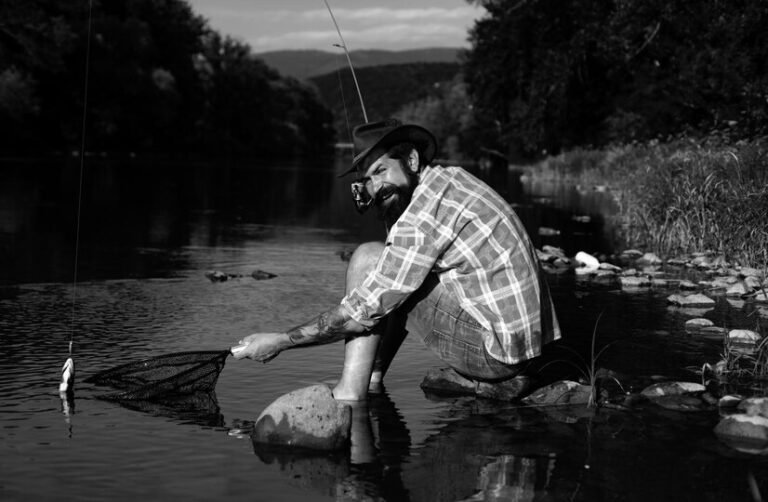The tragic story of the fisher boys drowning in Baton Rouge during the 1960s remains one of the most unforgettable events from Louisiana’s history. What started as an innocent fishing adventure ended in tragedy, forever altering the lives of those involved. This incident not only brought sorrow to the families and the community but also raised essential questions about the safety of children engaging in outdoor activities without proper guidance. Through this content, we will explore the background of the event, the boys’ love for fishing, the accident’s circumstances, the community’s response, and the impact it left on fishing practices for future generations.
Table of Contents
ToggleIntroduction
During the 1960s, Baton Rouge, Louisiana, was known for its rich cultural traditions and the tight-knit communities built around outdoor activities such as fishing. Fishing was both a way of life and a recreational pursuit, especially for young boys eager to explore the rivers and lakes surrounding the area. Sadly, the fisher boys drowning in Baton Rouge during the 1960s marked one of the darkest moments in the city’s history. A group of young boys lost their lives during a fishing trip, leaving the community in shock and sparking conversations about child safety in water-based activities. This tragic event highlights the importance of taking precautions, even during seemingly harmless outings.
Baton Rouge in the 1960s: A City Shaped by Tradition
In the 1960s, Baton Rouge was undergoing significant social and economic change. It was a city where community spirit thrived, and outdoor activities such as fishing were woven into the fabric of everyday life. Rivers like the Mississippi and nearby lakes provided locals with opportunities for both relaxation and livelihood. Children, especially boys, were encouraged to spend time outside, learning fishing skills from older family members. Fishing was often seen as a safe way for children to stay engaged, promoting independence and responsibility.
However, the casual approach to safety that accompanied many recreational activities at the time would soon be challenged by a tragic event. With limited knowledge about water safety and a lack of protective equipment, young children were often left vulnerable to the dangers of unpredictable water conditions.
The Boys and Their Passion for Fishing
The boys involved in the tragic drowning incident were known for their love of fishing. They came from families where fishing was not just a hobby but a way to bond with nature and the community. These boys spent much of their free time near rivers and lakes, catching fish to bring home for dinner or simply enjoying the peacefulness of the water. Fishing was a skill passed down from generation to generation, and the boys took pride in mastering it.
The particular group of boys involved in the incident had made it a tradition to fish at their favorite spot along a riverbank near Baton Rouge. They were comfortable with the water and had no reason to believe their fishing trip would end in anything but fun and adventure.
The Day of the Tragic Incident
On a warm summer afternoon in the early 1960s, the boys set out for their usual fishing spot by the river, eager to spend the day casting lines and sharing stories. However, the day took a devastating turn when the boys encountered trouble in the water. Eyewitnesses reported that one of the boys may have slipped into the river, and the others rushed to help him.
What the boys didn’t anticipate was the sudden change in the river’s current. Although the river appeared calm on the surface, strong undercurrents swept the boys off their feet. Despite their swimming abilities, they struggled against the powerful water, which pulled them further into deeper areas. With no adults nearby to assist, the boys were overwhelmed, and several of them drowned before any help could arrive.
Key Causes Behind the Drowning
Several factors contributed to the tragic fisher boys drowning in Baton Rouge during the 1960s:
- Unpredictable River Currents: Rivers like the Mississippi are known for their deceptive currents. Even experienced swimmers can struggle against the sudden changes in water flow.
- Lack of Life Jackets: At the time, children rarely wore life jackets, even when fishing near rivers. The absence of life-saving equipment made it difficult for the boys to stay afloat once they lost control in the water.
- Inadequate Supervision: Fishing was often considered a harmless activity, and children were allowed to fish without close adult supervision. Unfortunately, this left the boys without help when they needed it the most.
- Unawareness of Water Safety Practices: During the 1960s, there was limited awareness about water safety, especially among children. Many children did not know how to respond in emergencies like strong currents.
Immediate Search and Community Response
The news of the boys’ disappearance sent shockwaves through Baton Rouge. Families, neighbors, and local authorities came together to organize search efforts. Fishermen from the area, along with law enforcement, scoured the river for days, hoping to find the boys or recover their bodies. Boats patrolled the river, while volunteers searched the riverbanks on foot. Unfortunately, despite their dedicated efforts, the outcome was heartbreaking for the families and the community.
Vigils were held, and the entire community mourned the loss of the young boys. The incident sparked conversations about how to prevent similar tragedies in the future, with many parents becoming more cautious about letting their children fish unsupervised.
Lessons Learned: Impact on Fishing Practices and Safety
The fisher boys drowning in Baton Rouge during the 1960s led to several important changes in how fishing and water activities were approached in the community. While the tragedy could not be undone, it became a turning point for improving safety measures.
- Use of Life Jackets: Parents became more mindful of equipping their children with life jackets, even for fishing near familiar waters.
- Increased Supervision: Families began accompanying their children more often during fishing trips, ensuring that someone was always present to provide help if needed.
- Community Safety Programs: Local schools and community organizations started offering water safety programs, teaching children about the dangers of currents and how to stay safe near water.
- Enhanced Awareness: The tragedy instilled a greater awareness of the unpredictability of rivers, encouraging families to take extra precautions when engaging in outdoor activities.
Conclusion
The story of the fisher boys drowning in Baton Rouge during the 1960s is a somber reminder of the unpredictable nature of water and the importance of safety in recreational activities. The loss of young lives had a profound impact on the families involved and the wider community, prompting changes that would help prevent future tragedies. While the boys’ love for fishing lives on in the memories of those who knew them, their story serves as a lasting lesson in the value of caution, preparation, and awareness. As future generations continue to enjoy fishing in Baton Rouge, the legacy of these boys reminds us to cherish every moment while respecting the power of nature.
Also Read: Fisher Boys Drowning in Baton Rouge off Harding Blvd: A Heartbreaking Incident




